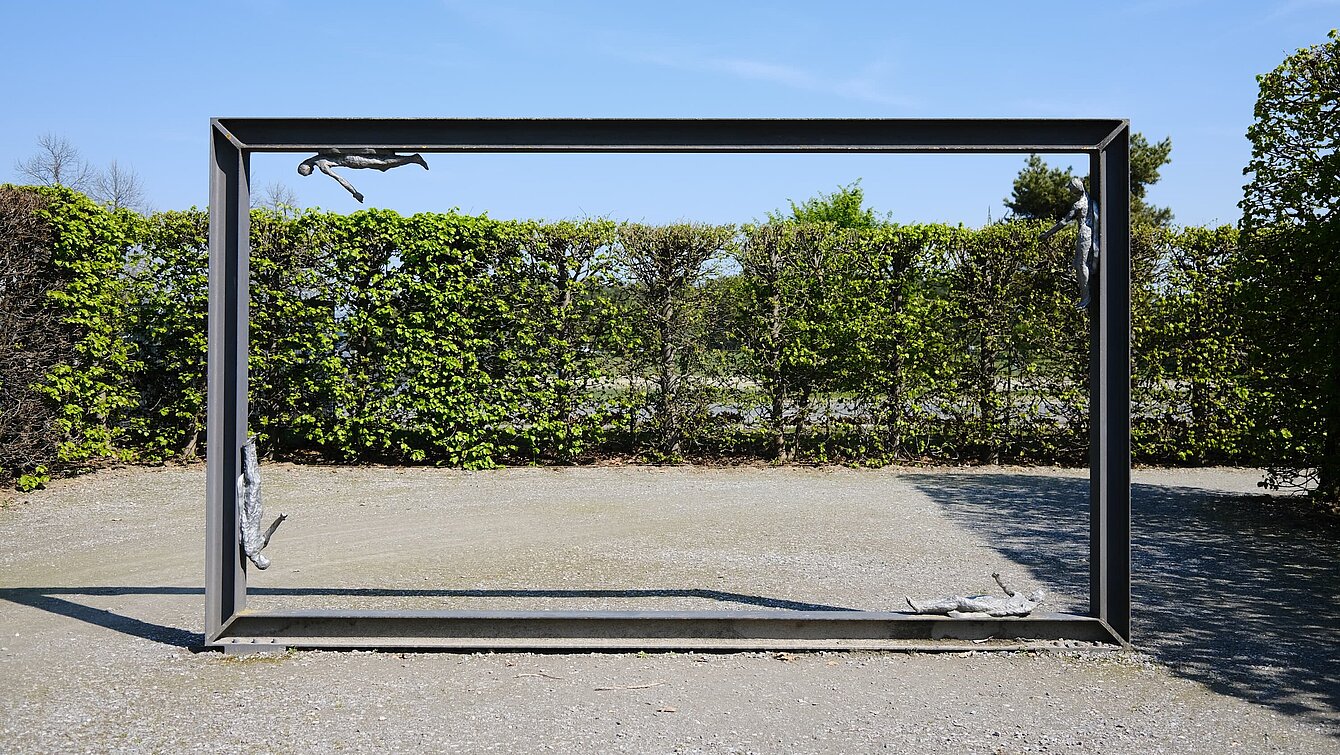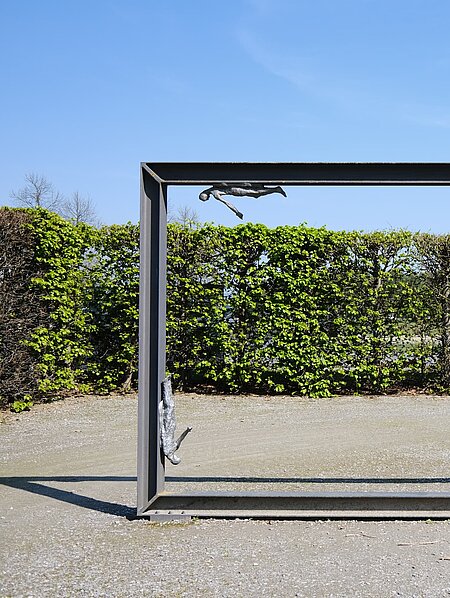This work challenges our understanding of images, sculptures and objects. A section of reality is framed, so turning it into an image itself. At the same time, Schnur addresses a problem of the image—the depiction of nature. The framed image here shifts depending on the position of the viewer and the appearance of nature, which changes the sculpture as a whole. In this way, the painting becomes a threedimensional object—not least because the mounted figures and the frame are essential components of the picture.
o.T.
Martin Schnur, 1995


Image Credits
Author
Günther Holler-Schuster
Location on map
Position 32
Owner
Artothek des Bundes
Artist biography
Martin Schnur
Show all
About the sculpture
In his work, Martin Schnur’s concern is the picture. His theoretical starting point is sculpture. And according to the traditional approach, sculpture is an attempt to depict reality. However, it is more likely to hear of reality being depicted in two-dimensional form.
In the 1960s, artists such as Jasper Johns or Frank Stella referred to the fact that a picture does not necessarily have to be rectangular or square. Also, the picture is not only an image but also object like every three-dimensional object. In addition this special object will also change its environment. Thus, what is represented suddenly becomes secondary. The painting is no longer the carrier of imaginary contents, but an independent reality.
In its material character, Schnur’s work “untitled” fulfils all requirements for sculpture. We read its elements (frame, figures), but we read them as parts of an image. The four aluminium figures, mounted to the steel frame, point out of the rectangle of the picture, as if to refer to the fact that the real event takes place outside the actual picture surface.
Indeed the object frames a section of reality; a piece of reality becoming a picture. This sculpture alludes to painting and, again, the problem of the image – the depiction of nature. Thus, this piece of art is turned into an “apparatus” determining vision and contributing to the creation of images. With the movement which has to be carried out, the beholder must actively collaborate. The act of walking around it refers to the multiple angles of vision onto a sculpture.
In this work, Schnur seems to assign something to painting, which is not a natural intrinsic part of it. On the other hand, sculpture was placed on a functional level. The figures seem to refer to the fact that the beholder should strive to integrate the sphere outside the work of art into the complete character.



















